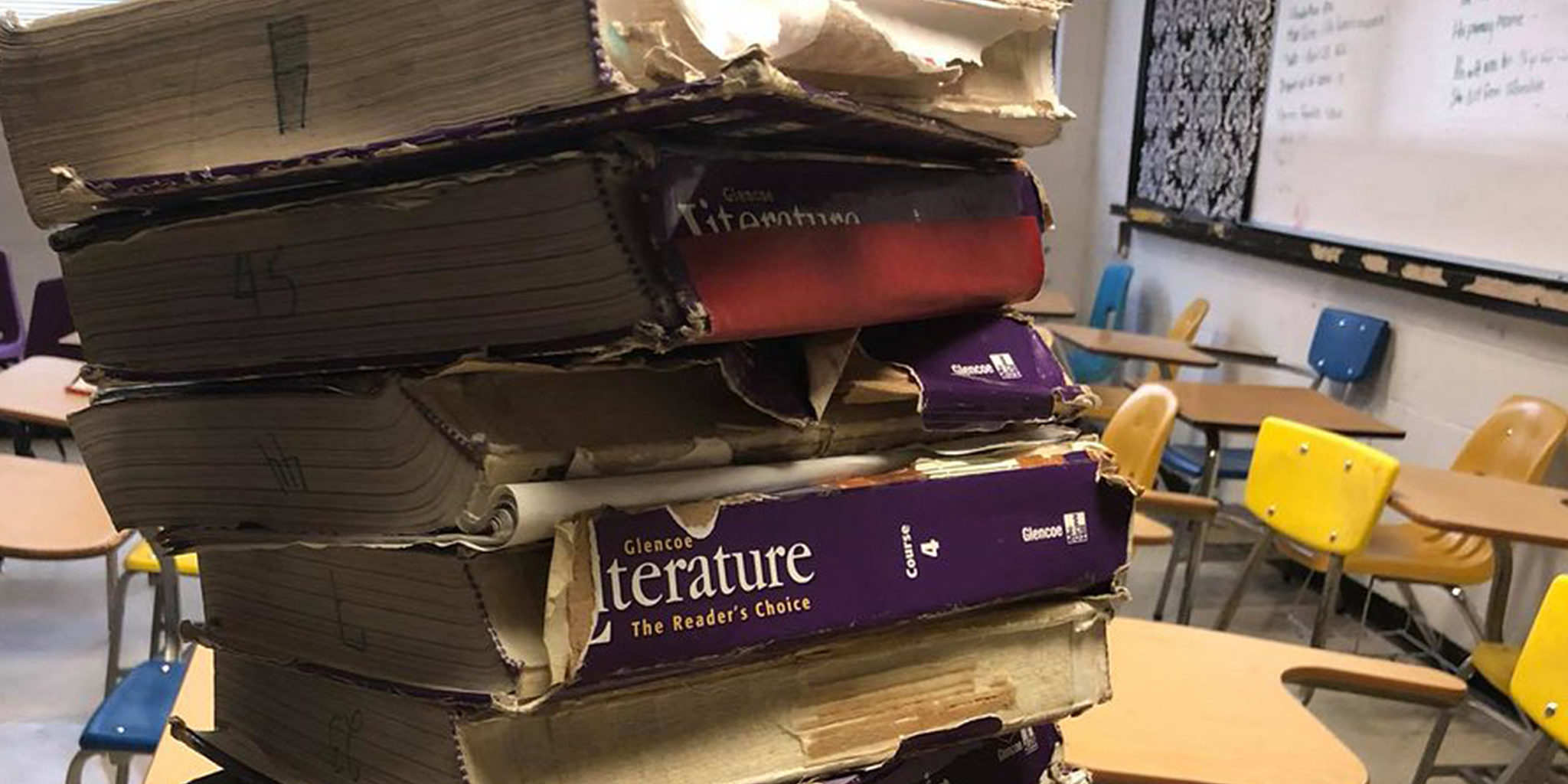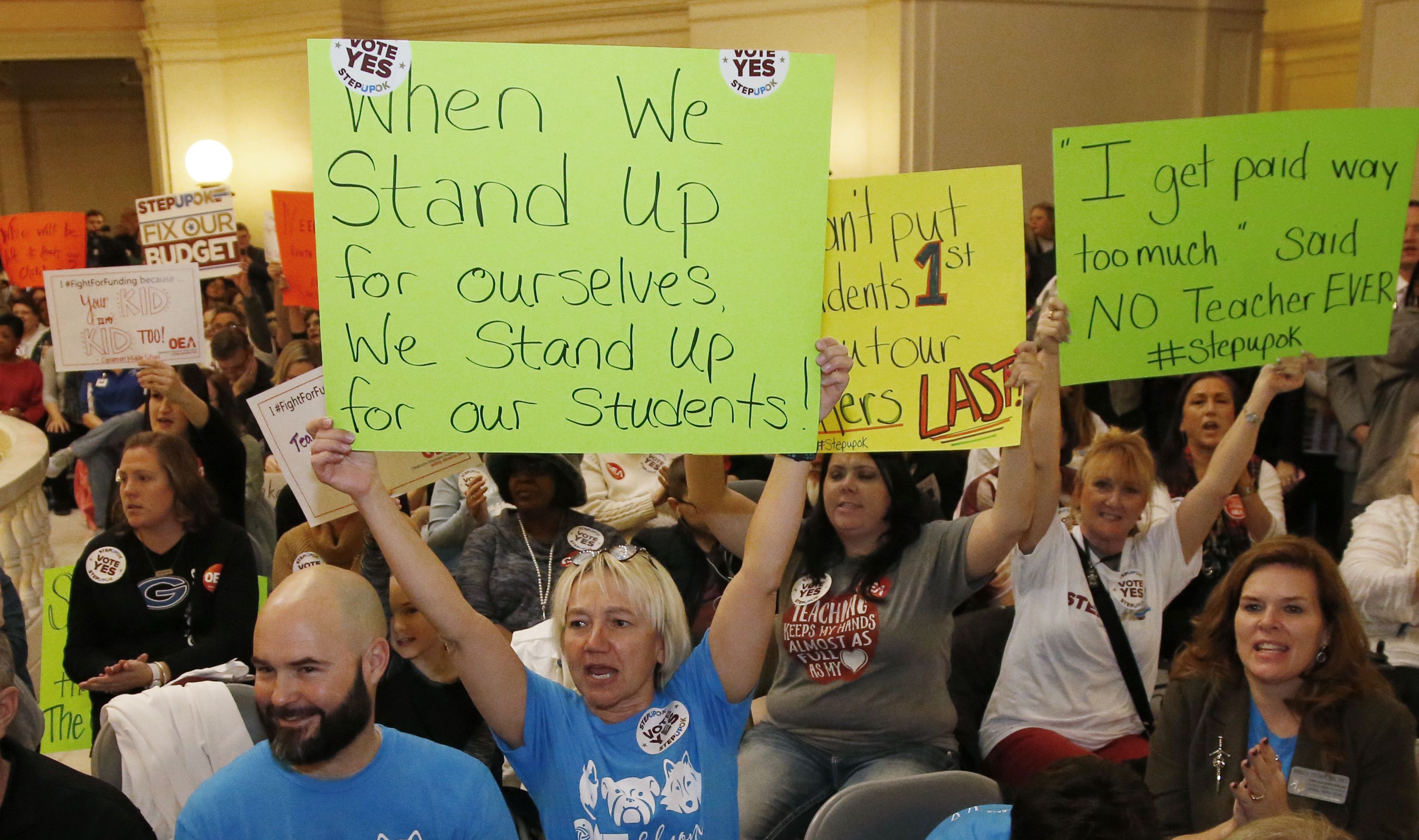Oklahoma and Kentucky teachers are in an uproar over tax cuts that have crippled the education programs. For decades, these states have repeatedly ignored and slashed the budgets of teachers. Concerns over classroom’s lack of proper equipment for students and teacher’s extremely low pay haven’t been properly addressed and finally led to an explosive strike in these states this week.
Teachers have found themselves unable to cope with the heinous conditions, and on April 2 many went on strike, demanding that both states begin to provide their district with proper funding. Around 30,000 teachers and allies participated in the walkout and marched on the capitol in Oklahoma.
According to the strikers, without formal funding, education in the states will suffer even more if they had not gone on strike. In these mainly red-district states, though progress can be slow, the intensity behind the fight is apparent.
Teacher’s strikes are not uncommon in the Midwest, which saw similar strikes in 1988 and 1990. This time, teachers are demanding that the governments of each state to finally step up and act. From their own perspective, they do not fathom why the governments think they deserve so little.
As one teacher from Oklahoma put, “it is definitely not a cushiony job.” That same teacher also makes under $40,000 a year at her current job and has not experienced a raise in ten years while her former students make more money working in convenience stores.
Teachers in these states are often forced to take a second job, and sometimes a third, to maintain above the poverty line, and these secondary jobs often take away from the time that could be devoted to their students.
Working extra jobs just to make ends meet adds unnecessary pressure and unneeded stress on the teachers, which can reduce the quality of the education children receive from them.
The little money teachers have goes directly back into the school system at times. Due to the lack of funding, many schools in these states are missing essential items for healthy learning. A teacher described to CBS News she is forced to bring folding chairs from home due to the impoverished conditions of the school and the dilapidated equipment.
Overcrowding has also become an issue for some districts with the influx of students causing a strain on the bus services. This eventually led to Oklahoma instating a four-day school week. Even though this was undone late last year, it has already damaged students, who were robbed of a healthy education.

Before the strike, legislators did approve a $6,100 raise for teachers. This does not seem adequate to the many struggling teachers in the state. The initial list of demands was to develop the budget by $200 million over three years and to increase their wages by $10,000.
At first glance, a $6,100 increase might seem like a tremendous victory, but after decades of neglect, it feels like very little to the teachers. This legislation also does not require the schools to increase its budget for the classrooms, so teachers would still face the same problem with the under-equipped working environment. Oklahoma teachers are hopeful that eventually legislators will listen to them and will increase the schools budget.
Oklahoma teachers were uniquely situated as their unions openly supported them, school districts agreed with them and parents approved of the actions they are taking. However, in Kentucky, teachers have not received similar supports the protest as state law prohibits teachers from striking. Kentucky was only able to participate in a strike during spring break, and they have not received the same news coverage Oklahoma has.
Yet, teachers in Kentucky have their share of grievances, though some people they don’t seem as urgent. The critical issue in Kentucky is upcoming pensions policies being legislated in the Kentucky state house. The latest budget plans would force teachers to work longer in order to receive their pensions.
While this may appear to be frivolities in comparison to the concern of their peers in Oklahoma, it is by no means less critical since it sends a negative message that teachers don’t deserve the bare minimum. For sure, teachers deserve to have better working conditions, good paychecks and full retirement benefits.
These educators assist countless people in their time and ensure future generations achieve a lucrative education. Teachers from this state are still pushing through and actively attempting to strike. These strikers also went the state capitol on April 2 and may be planning to go on strike despite the ban.
The decay in the Southern Midwest school systems does fit in with a nation that prides itself on its exceptionalism, yet it could easily be solved by developing the budget and reducing tax cuts. With proper funding, education in these states can provide America with prepared college students and open further potentials for their younger generation.
College students can give back to their teachers and schools by supporting them in this fight. The best option is, of course, to vote since college students possess an incredibly potent tool in voting. Supporting state representatives who want to look after teachers is critical in allowing the needed legislation to get through.
Nevertheless, the next option is to put pressure on parents since many college students have younger siblings in public schools. Parents could attend school district and state meetings and support teachers when they go on strike. Public support is never this important in promoting a cause.
Another way that college students can help is not to let the issue get drowned in the influx of news in today’s America. The news media has an incredibly short attention span; news that happens today is gone before noon. In order to ensure this issue gets solved, it needs attention, which can be provided through active promotion on social media by college students.
College students today would not have gotten anywhere without the dedicated and hardworking teachers in their high school. It’s time that they were aided in getting the pay and recognition they deserve.

















